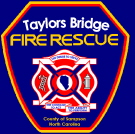 Home    Home Fireplace Safety Inside the Home Urban-Interface Areas Wood Shake and Shingled Roof Hazard |
The Wood Shake and Shingle Roof Hazard A house can be threatened by a wildfire in three ways;
Of these, firebrands account for the majority of homes burned by wildfire. The most vulnerable part of a house to firebrands is the roof. Because of its angle, the roof can catch and trap firebrands. If the roof is constructed of combustible materials such as untreated wood shakes and shingles, the house is in jeopardy of igniting and burning. Not only are combustible roofing materials a hazard to the structures on which they are installed, but also to other houses in the vicinity. Burning wood shakes, for example, can become firebrands, be lifted from the burning roof, carried blocks away and land in receptive fuel beds such as other combustible roofs. Unfortunately for homeowners with existing combustible roofs, there are no long-term reliable measures available to reduce roof vulnerability to wildfire other than re-roofing with fire resistant materials. |
||||||